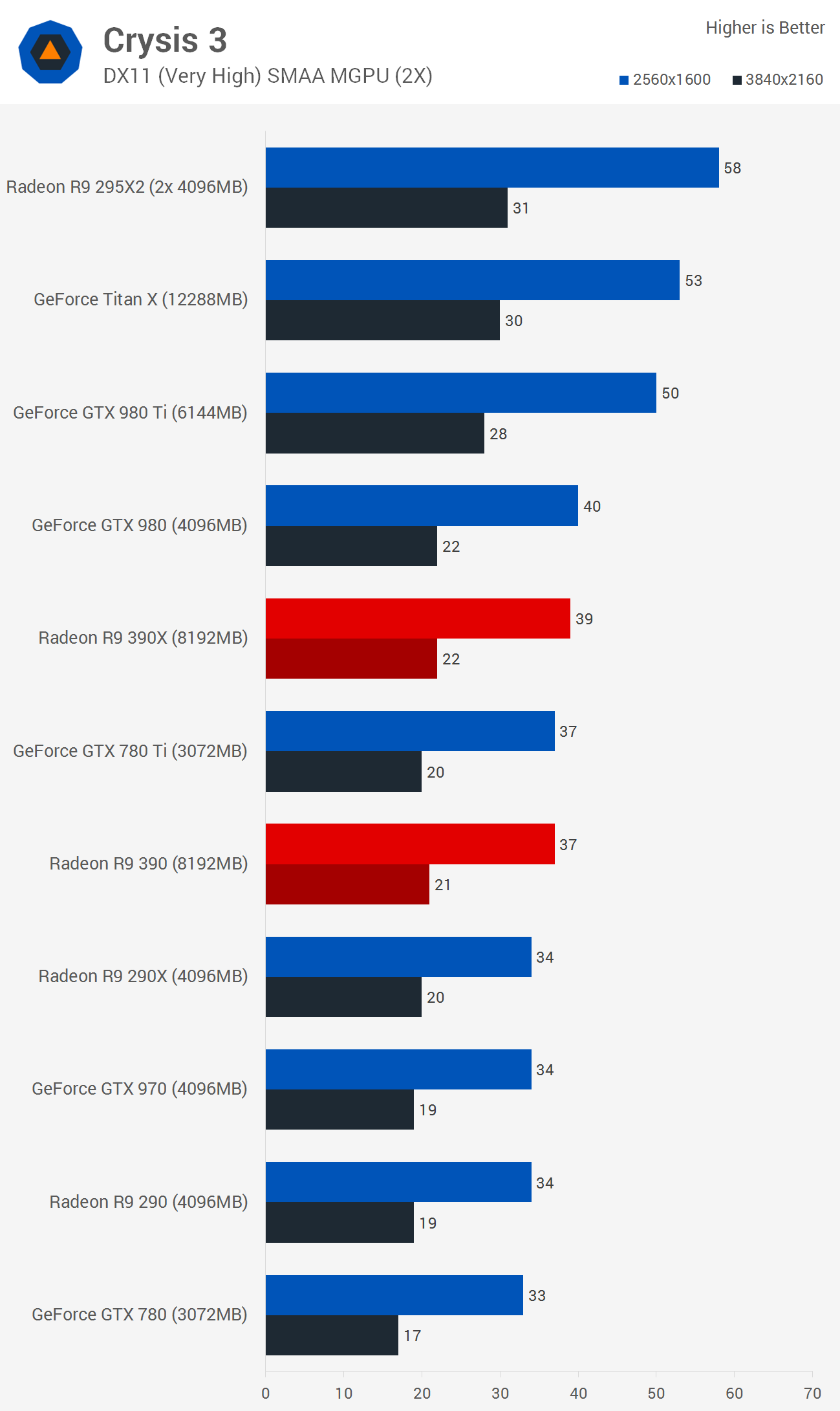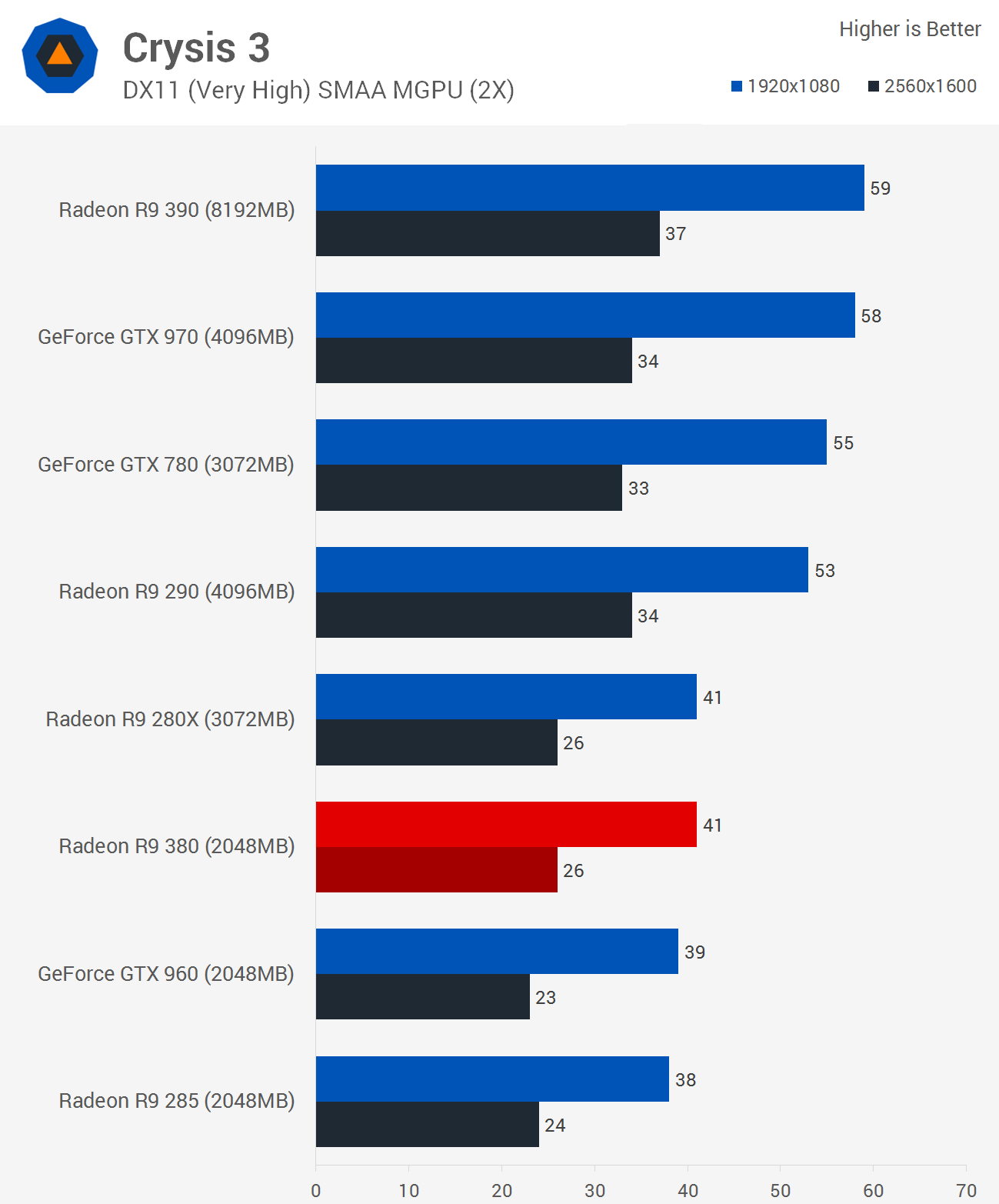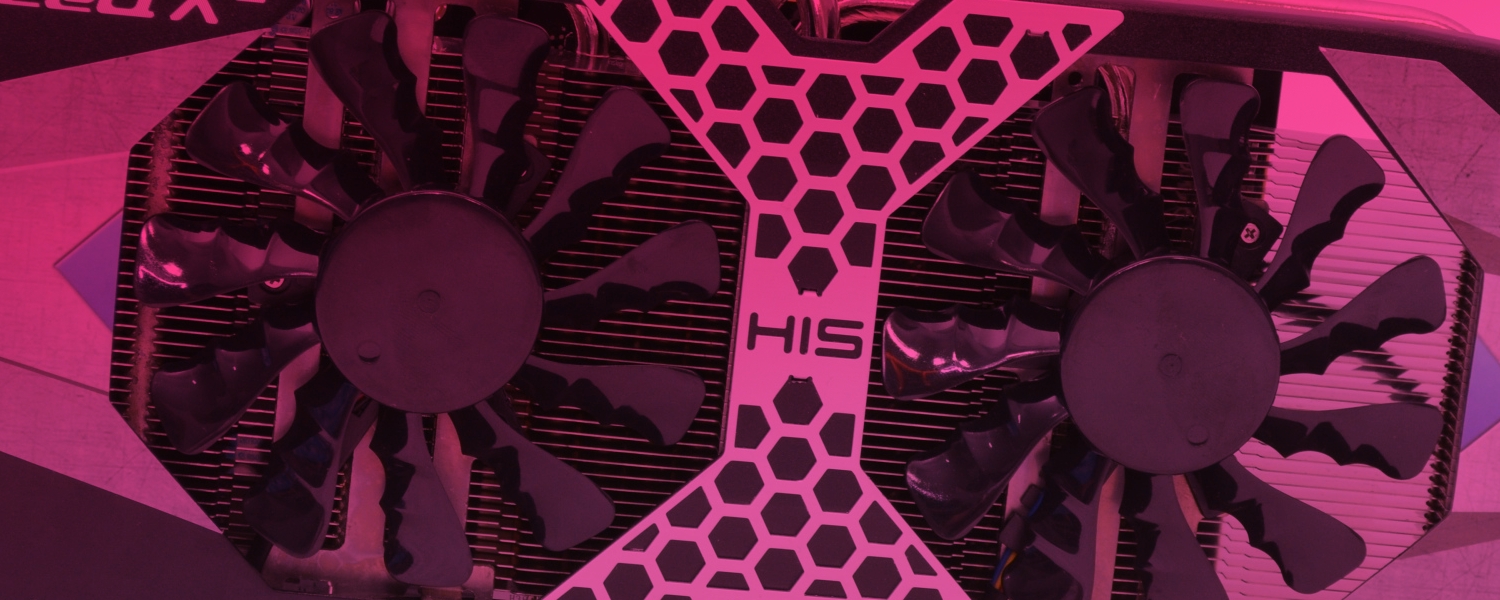Benchmarks: Crysis 3, Battlefield Hardline
The higher-end GPUs have been tested at 2560x1600 and 3840x2160 UHD 4K resolutions while the lower end cards were tested at 1920x1080 and 2560x1600. Graphics cards were tested with core and memory clock speeds set to AMD and Nvidia's specifications.
- Intel Core i7-5960X (3.0GHz)
- x4 4GB Kingston Predator DDR4-2400 (CAS 12-13-13-24)
- Asrock X99 Extreme6 (Intel X99)
- Silverstone Strider Series (700w)
- Crucial MX200 1TB (SATA 6Gb/s)
- Nvidia GeForce Titan X (12288MB)
- Nvidia GeForce GTX 980 Ti (6144MB)
- Gainward GeForce GTX 980 (4096MB)
- Gainward GeForce GTX 970 (4096MB)
- Palit GeForce GTX 780 Ti (3072MB)
- Palit GeForce GTX 780 (3072MB)
- HIS Radeon R9 390X (8192MB)
- HIS Radeon R9 390 (8192MB)
- AMD Radeon R9 295X2 (2x 4096MB)
- Gigabyte Radeon R9 290X (4096MB)
- Gigabyte Radeon R9 290 (4096MB)
- HIS Radeon R9 280X (3072MB)
- Microsoft Windows 8.1 Pro 64-bit
- Nvidia GeForce 352.90
- AMD Catalyst 15.5 Beta
- AMD Catalyst 15.15 Beta (300 series)

Starting with Crysis 3, the Radeon R9 390X is just 5% faster than the R9 390 but 15% faster than the R9 290X when comparing the 2560x1600 results. The R9 390X was also just 3% or 1fps slower than the GTX 980. While the R9 390 was 5% slower than the R9 390X, it was 9% faster than the R9 290 and GTX 970.

The R9 380 matched the performance of the R9 280X in Crysis 3 at 1080p, making it 8% faster than the R9 285 and 5% faster than the GTX 960.

Again we see that the R9 390X is just 5% faster than the R9 390, this time when testing with Battlefield Hardline. This meant that the R9 390X was just 7% faster than the R9 290X and 5% slower than the GTX 980. The R9 390 on the other hand was 13% faster than the R9 290 and 7% faster than the GTX 970.

The R9 380 delivered an average of 60fps at 1080p and despite that it was a whopping 14% slower than the R9 280X and just 2% faster than the R9 285. Moreover, it was 6% slower than the GTX 960.
